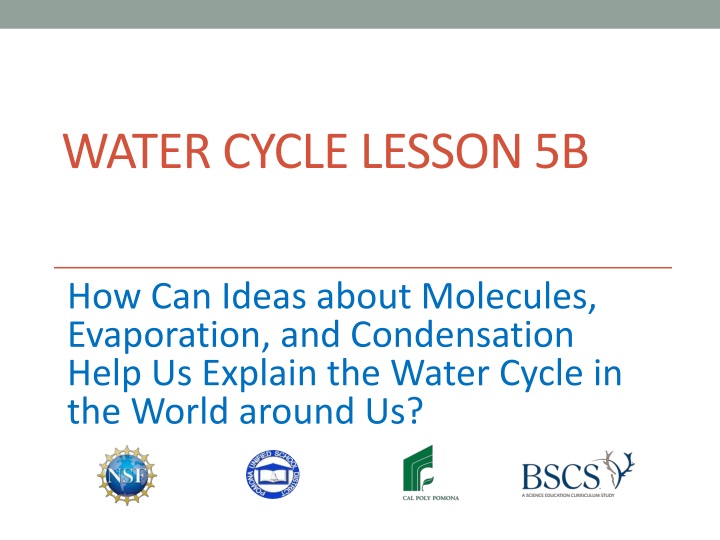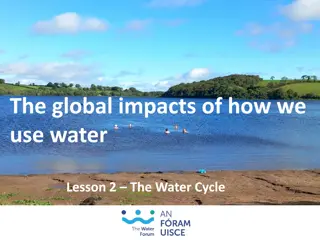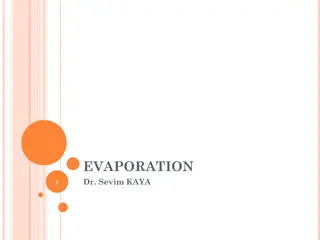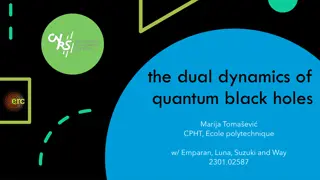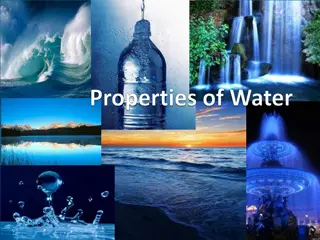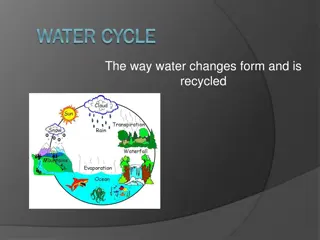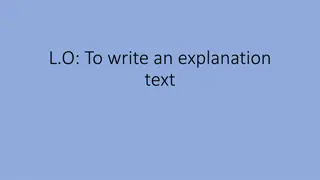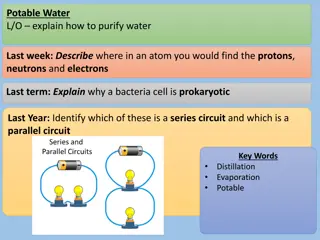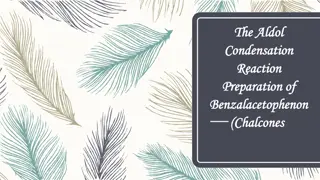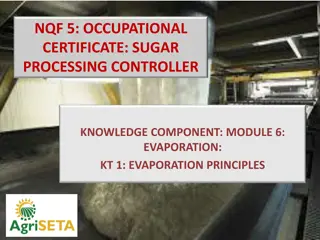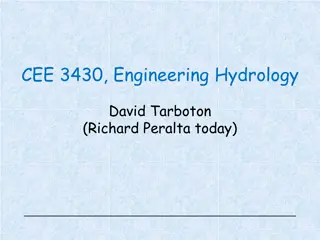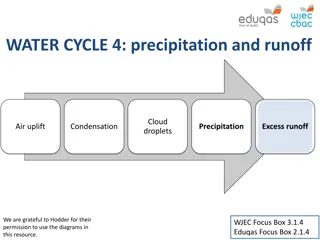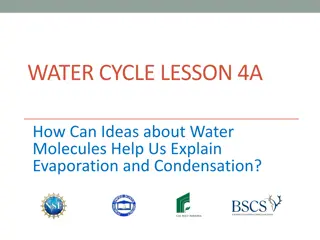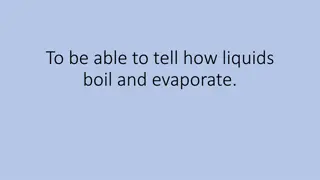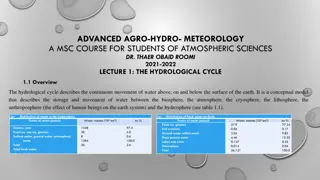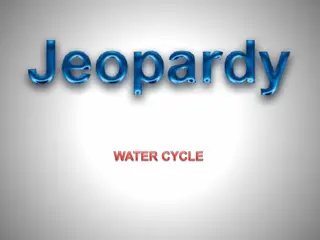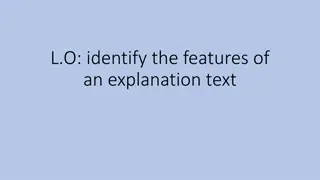Explaining Water Cycle with Molecules, Evaporation, and Condensation
Concepts of molecules, evaporation, and condensation aid in understanding the water cycle globally. Discover new ideas about water molecules and their states, and learn where these processes occur on Earth through engaging visuals and discussions.
Download Presentation

Please find below an Image/Link to download the presentation.
The content on the website is provided AS IS for your information and personal use only. It may not be sold, licensed, or shared on other websites without obtaining consent from the author.If you encounter any issues during the download, it is possible that the publisher has removed the file from their server.
You are allowed to download the files provided on this website for personal or commercial use, subject to the condition that they are used lawfully. All files are the property of their respective owners.
The content on the website is provided AS IS for your information and personal use only. It may not be sold, licensed, or shared on other websites without obtaining consent from the author.
E N D
Presentation Transcript
WATER CYCLE LESSON 5B How Can Ideas about Molecules, Evaporation, and Condensation Help Us Explain the Water Cycle in the World around Us?
Review: Ideas about Water Molecules Photo courtesy of Pixabay.com Photo courtesy of Pixabay.com Photo courtesy of Pixabay.com Photo courtesy of Pixabay.com Photo courtesy of Stock.Adobe.com
Todays Focus Question How can ideas about molecules, evaporation, and condensation help us explain the water cycle in the world around us?
The Water Cycle What do you already know about the water cycle?
New Ideas about the Water Cycle Let s see what we can discover about the water cycle from the handout. As you read, mark any ideas that are new to you or weren t mentioned in our discussion. What new ideas can we add to our initial ideas about the water cycle?
The Water Cycle on Earth Where on the diagram would you expect to find water molecules in the liquid, gas, and solid states? 1. Write liquid everywhere you would expect to find water molecules in the liquid state. Draw 6 liquid- water molecules. 2. Write water vapor everywhere you would expect to find water molecules in the gaseous state. Draw 6 water-vapor molecules. 3. Write solid everywhere you would expect to find water molecules in the solid state (snow, ice). Draw 6 solid-water molecules.
Water Molecules LIQUID STATE SOLID STATE GAS STATE (WATER VAPOR)
Where Did You Draw Water Molecules in the Liquid, Gas, and Solid States?
Where Do These Processes Happen? Add arrows and labels to your diagram to show where these processes occur on Earth: Evaporation Condensation Precipitation Gaining heat energy Losing heat energy
Where on Earth Do We Find Evaporation, Condensation, and Precipitation?
The Water Cycle on Earth Work with a partner to come up with a sentence that describes what happens to water moleculesin the water cycle. Include the idea of energy in your sentence.
Lets Summarize! Listen carefully as I summarize what we ve learned so far about the water cycle. When I finish, it will be your turn to summarize what happens!
Summarize These Key Ideas 1. Through evaporation, _________, and __________, water molecules are constantly changing from a liquid to a gas and back to a liquid (or a solid) as they cycle from Earth to the atmosphere and back to Earth. 2. Changes of state happen when water molecules ____ heat energy (evaporation) or ____ heat energy (condensation or freezing). 3. The _______ provides the energy that keeps water molecules changing and moving.
Next Time Today we explored how water molecules in the world around us continuously change from one state to another and move from place to place on Earth and in the atmosphere. These ideas helped us answer our first unit central question: How does water change in the world around us? Next time we ll consider our second unit central question: Does Earth ever run out of water?
